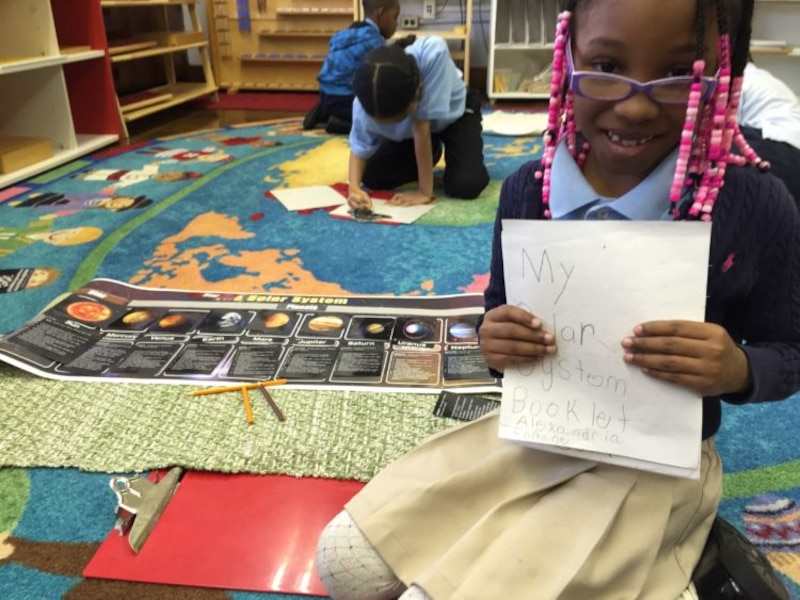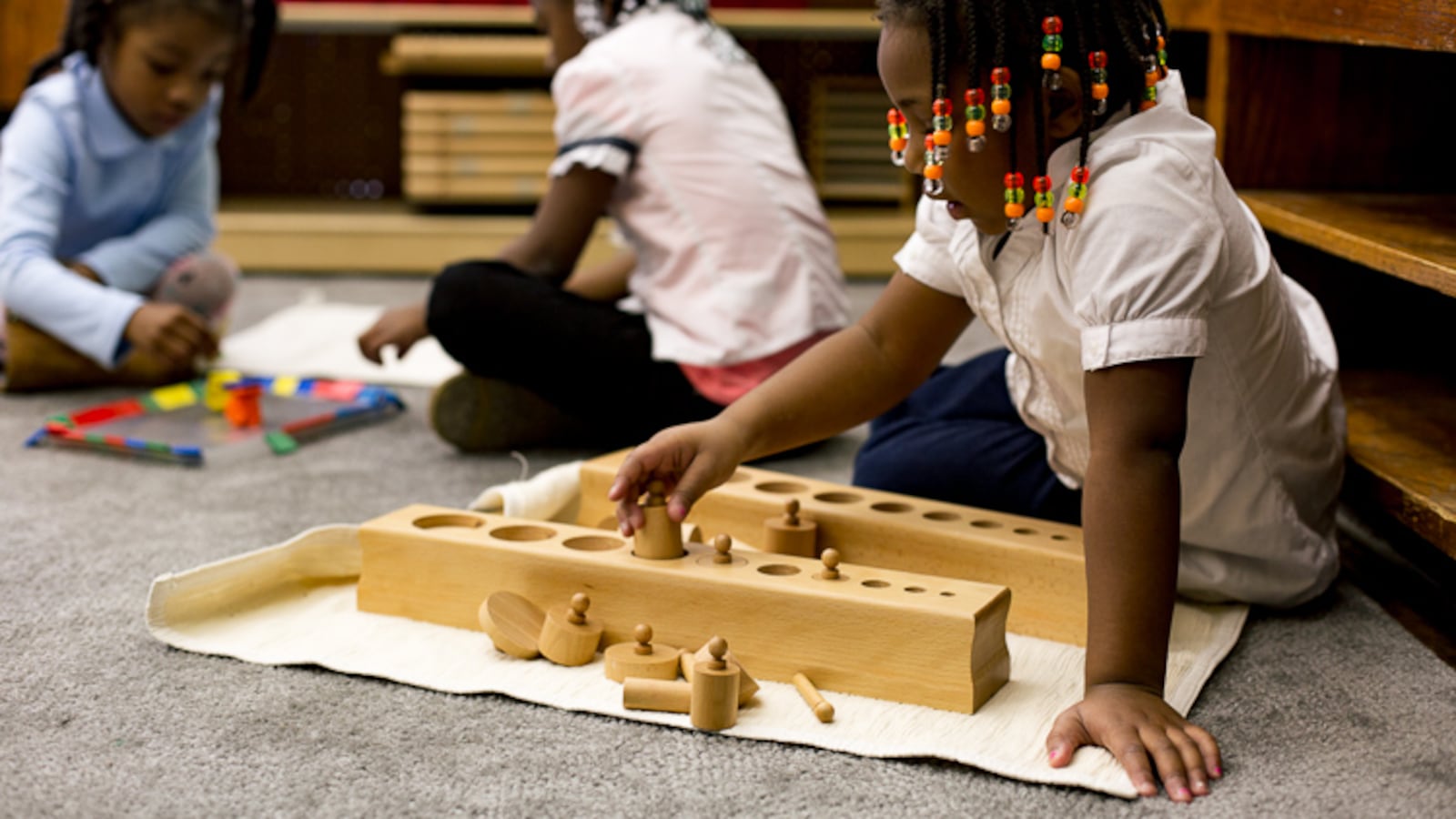When her son Carlton was born, Yolanda King started saving money for private school.
As a special education teacher in the Detroit Public Schools, King said she never imagined entrusting her child to the cash-strapped district that had so often let her down.
“DPS has definitely disappointed everyone,” she said. “Even before I had kids, it saddened me some of the things they did in the district.”
But four years later, King doesn’t even live in Detroit any more — she moved this year to a nearby suburb — but she drives Carlton into the city every day to attend a public school.
It’s not that Detroit schools have significantly improved. Despite a recent financial overhaul that resulted in a new name — the Detroit Public Schools Community District — and more money for classrooms, the district still faces severe academic and financial challenges.
But something happened this year to change King’s thinking about the district: It started offering Montessori instruction.
The popular educational method that allows children to learn at their own pace in mixed-age classrooms not only appealed to King as someone who sent her son to a private Montessori preschool. It also said something larger to her about the district’s relationship with its children and its future.
“It was an opportunity for DPS to prove to me as an employee that it really valued our students,” she said. “[It shows they’re] looking at different ways to educate, to kind of give something back instead of taking something away, as they typically unfortunately do.”
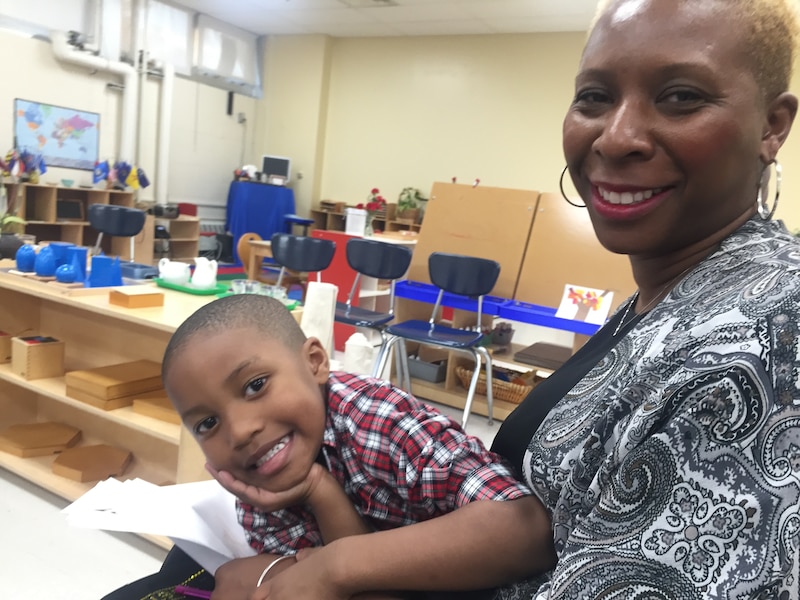
Montessori has long been associated with private schools, particularly preschools. But a growing share of the country’s 5,000 Montessori programs are now run by school districts or charter operators who see offering the new approach as a way to compete for families who have many options.But as Montessori becomes more common in public schools, the programs often face steep challenges as they try to shoehorn a non-traditional approach into a traditional bureaucracy.
How can students learn at their own pace when there are state tests looming? Should some classrooms get new wooden blocks while others lack textbooks? And in Detroit, there’s an added question: Will the district be stable enough to sustain the new program in the years to come?
“DPS unfortunately is the king of let’s start it, let’s try it for a minute or two, then — oop, no, scrap,” King said. “But my hope is that with a lot of parent involvement and a lot of community support, we can make sure the program grows and is pushed forward.”
* * *
Starting a public school Montessori program was even more complicated in Detroit than in other districts.
Here, it wasn’t just an issue of buying materials and inviting families to apply — because the school system had been in crisis for years.
As district officials last spring announced plans to roll out a Montessori program, they were also warning that mounting debts had gotten so severe that they soon would not be able to pay teachers.
That meant Montessori leaders were planning a new program without knowing for sure if there’d be money to pay for it. They couldn’t enroll any kids or start training any teachers.
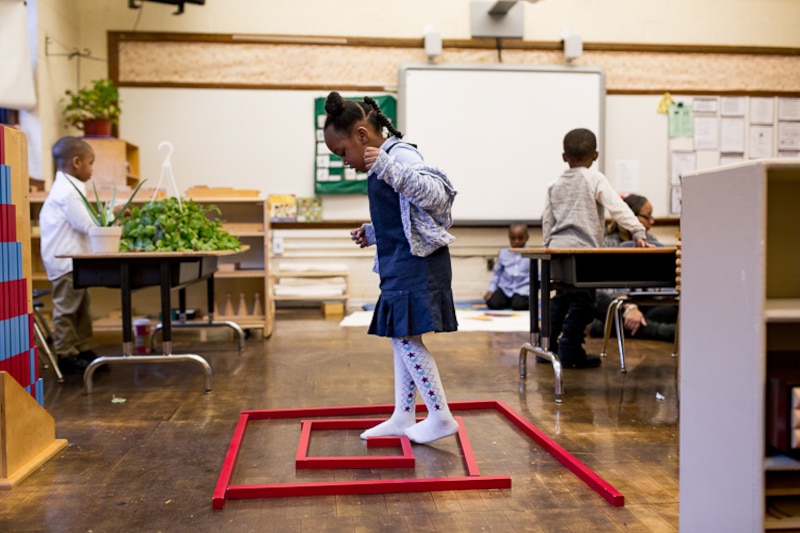
So when state lawmakers finally signed off on a $617 million rescue package in June, district leaders had to act quickly.
They used $453,000 of the new state funds to launch Montessori for 150 kids in eight classrooms at three different schools, said Steve Wasko, the district’s executive director of enrollment.
That meant buying special Montessori materials like the wooden beads and blocks that are used to teach math and the sandpaper letters that are used to teach writing.
And it meant quickly training 16 teachers — eight lead teachers and eight associate teachers — in the Montessori method.
Ideally, Montessori teachers will train for a year or more, working with veteran educators before taking over their own classrooms. But that luxury is not available to many new Montessori programs because there are simply not enough veterans available to mentor new teachers, said Teresa Noble, the education director for South Carolina-based Institute for Guided Studies, which is training Detroit’s Montessori teachers.
Detroit’s tight timeline made things even more difficult. By the time the state funds arrived in July, the district had just two months to train teachers in a completely new way of teaching.
The Detroit teachers got four weeks of intensive instruction over the summer and are continuing to get training during the year from Noble and her team.
“There’s a challenge when you have teachers who are used to one methodology and they’re having to make a pretty 180 degree turn to what they’re used to, but these teachers seem to have embraced the philosophy,” Noble said. “We are providing them the same training that I would provide for a private school and … as much or maybe even more support.”
Wasko said the district made a point of choosing training programs, materials, and furnishings that were accredited or certified by national Montessori associations.
“It was critically important that this program be implemented with true fidelity to authentic Montessori methods and structures,” he said.
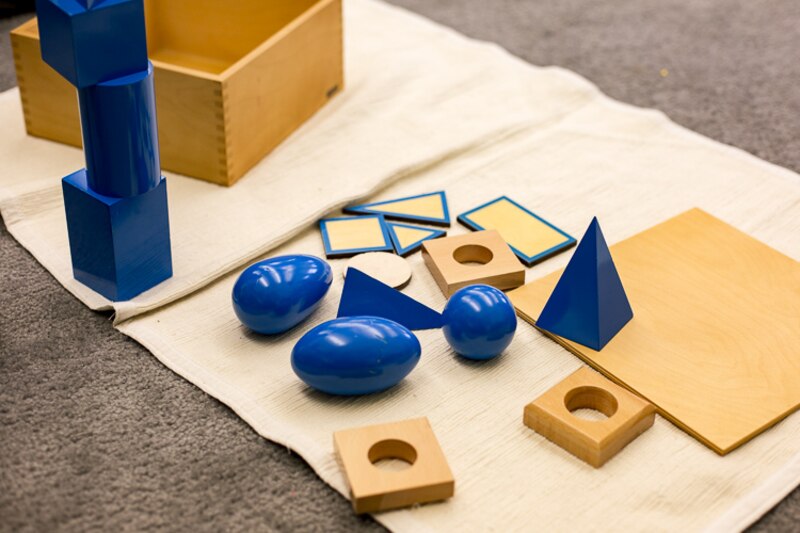
The district had good reason to fast track the program — if it ever hopes to recover from the financial turmoil that has undermined its schools for years, it desperately needs new ways to attract families.
In a city with nearly equal numbers of district and charter schools and with state laws that allow kids to cross city borders to attend schools in neighboring districts, the district has been bleeding enrollment for years. That’s meant millions of dollars that used to flow to the district now go somewhere else.
The new Montessori program is one strategy the district is using to recruit families who might otherwise not choose to enroll in district schools. Other districts and school operators have had the same realization, launching several hundred new public school Montessori programs across the country in the last 10 years, said Keith Whitescarver, who heads the National Center for Montessori in the Public Sector.
“Montessori has a good brand,” he said.
The brand has been fed by news reports about successful people who attended Montessori as well as mounting research on the benefits of using children’s natural curiosity to teach math, and reading as well as social, emotional and critical thinking skills.
Detroit’s Montessori program is still quite small. Spain Elementary School, where King’s son is enrolled in Detroit’s midtown neighborhood, has three Montessori classrooms. The district also has one Montessori classroom at Maybury Elementary in Southwest Detroit and four at Edison Elementary in northwest Detroit. All of the classes serve 4- and 5-year-olds except one class at Edison that serves kids aged 6-9.
But despite its small size, the new program is already having an impact, said Marcus Davenport, Edison’s principal.
“It’s made our population more diverse,” he said.
While in the past, his school largely enrolled students who lived near the school, Montessori has brought in families who would otherwise have chosen charter schools or driven out to the suburbs for school.
“You have people coming from diverse backgrounds, coming from other areas of the city,” Davenport said. “It’s definitely been a major attraction for parents.”
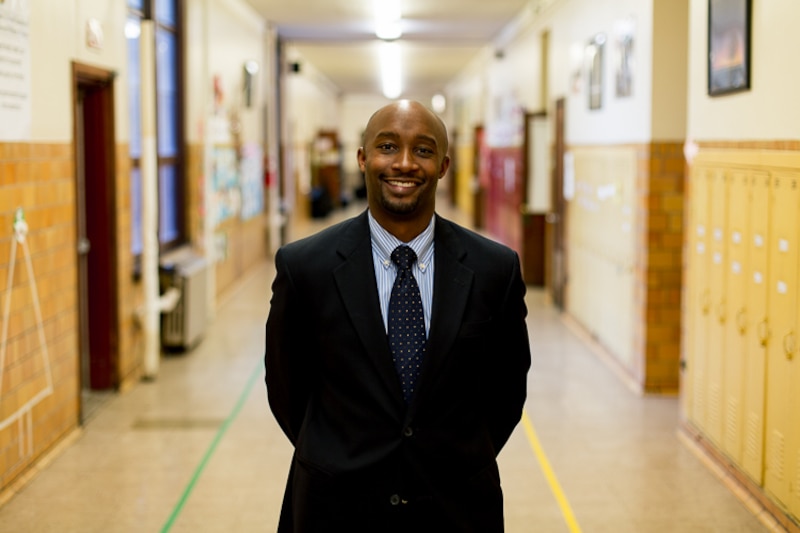
* * *
Most of the classrooms at Edison Elementary school look fairly typical, with desks lined up facing the teacher or pushed together into tables. But the students in Monica Fountain’s Montessori class are often sprawled out on the floor.
On a recent morning, Bryan Smith, 8, was putting the finishing touches on a mutli-colored map he drew of the United States, first tracing the states from a classroom map, then coloring each state with crayons and labeling them with a marker.
“I’ve been working on this for like eight days,” Bryan said. “I work on it every day.”
Across the room, his classmate, Alexandria Fortune, 7, was making a book about the solar system, drawing each planet with colored pencils, then writing basic details about each planet on the back. Other kids worked alone or in groups on reading, math or geography lessons.
The class has a broad range of students with different ability levels, said Nicola Turner, who runs the Montessori program for the district.
“Some have been retained, and some are extremely gifted,” she said.
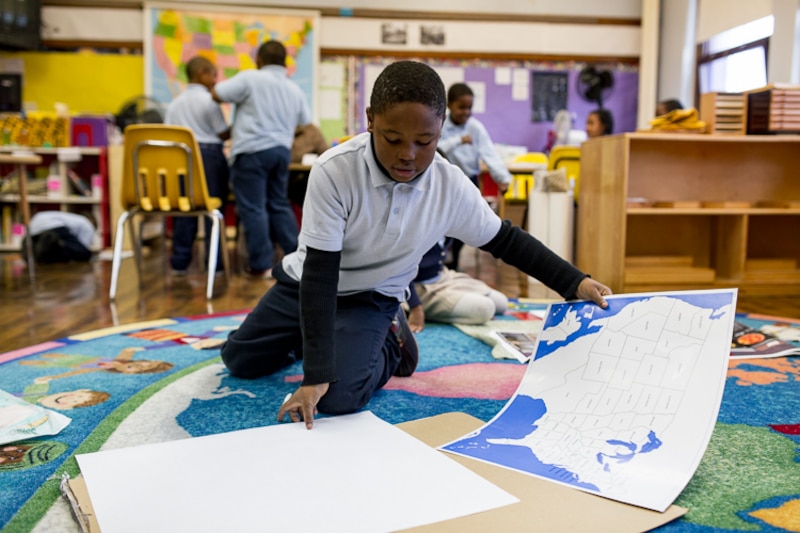
But with Montessori, Fountain said she could keep track of all of her students just by sitting back and watching them. The kids decide which activities they want to pursue and can freely roam their classroom to choose their daily tasks.
“I think the traditional [classroom] is more cookie-cooker and it’s supposed to fit every child but every child doesn’t fit a traditional classroom,” said Fountain, who taught for 19 years in eight DPS schools before joining the Montessori program. “Maybe their minds aren’t prepared yet for two-digit addition, but in a Montessori classroom, they’ll learn it in a different way with hands-on materials.”
Down the hall, in one of the early childhood classrooms, jazz music wafted out of a computer speaker while several children worked together laying long, narrow blocks in a pattern to build a labyrinth on the floor. One girl stood on a chair to put the final block atop a six-foot tower she was building.
“That teaches focus, concentration and early math skills,” teacher Simone Berry explained.
Class sizes in the Montessori program are lower than in a typical DPS classroom, with most of the classes capped at 20 children.
“We wanted to be very cognizant and conscious of the class sizes because it’s a new program, new students, new teachers,” Turner said. “We wanted to make sure that the teachers are able to have time in the classroom, to make sure they’re planning … It’s totally different from the way we usually teach.”
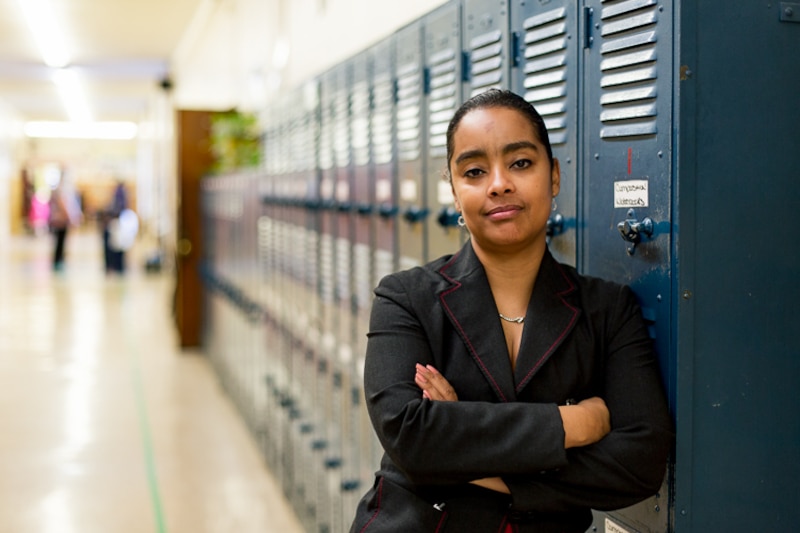
For now, exactly how many Detroit students will get to experience Montessori instruction — and for how long — is unclear. Turner and Wasko say they’re working on expanding Montessori in all three existing schools, as well as talking with several other schools that have expressed interest in the program.
Interim Superintendent Alycia Meriweather has said she’d like the program to eventually expand up through eighth grade or even into high school (where Montessori programs are relatively rare.) But with the district shifting to the control of a new school board next month, Meriweather doesn’t even know how much longer she’ll have a job.
The future of public school Montessori in Detroit will be decided over the next few months as part of larger conversation about money and priorities, Wasko said.
As of now, he said, “no definitive decisions have been made.”
The budget issues may be challenging. Each Montessori classroom has a lead teacher, an associate teacher and an aide who helps with lunch. That’s typical of the district’s pre-kindergarten programs, which get extra state and federal preschool funds.
But as this year’s Montessori students advance into higher grades, continuing the program would mean committing additional funds to pay for the extra staffing that Montessori classrooms require. Montessori classrooms generally need a specially trained lead teacher and a specially trained associate teacher to supervise children as they pursue their individualized learning programs. That might be a tough sell in a district where teaching shortages and budget shortfalls have swelled some class sizes to 30 or even 40 or more students.
Parents like King are aware that the program they love could suddenly disappear if the new school board doesn’t support it or if the district runs out of money again.
But King says this is a program that’s working — and she and other parents plan to fight for it.
“I think that if parents are loud enough and supportive enough of anything in DPS, it makes them more accountable to doing it,” King said. “Too many times, unfortunately, the parents don’t know their power.”
This story was produced in partnership with Metromode as part of a solutions journalism series on Metro Detroit’s regional issues, conducted in partnership with Metro Matters and guided by the Emerging Leaders Board.
